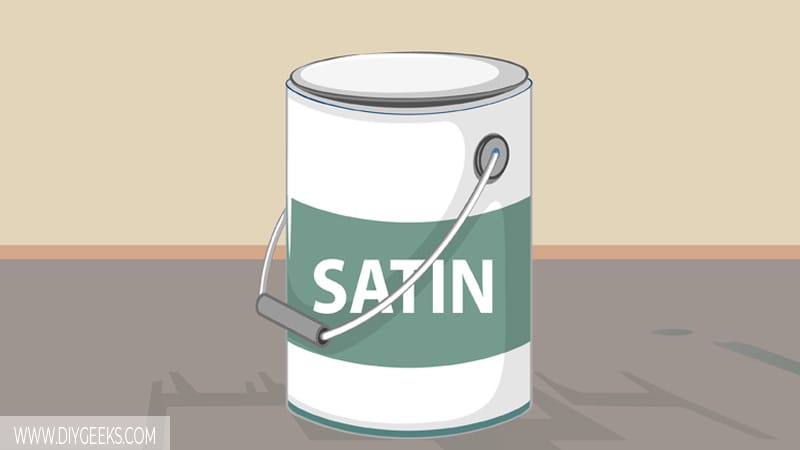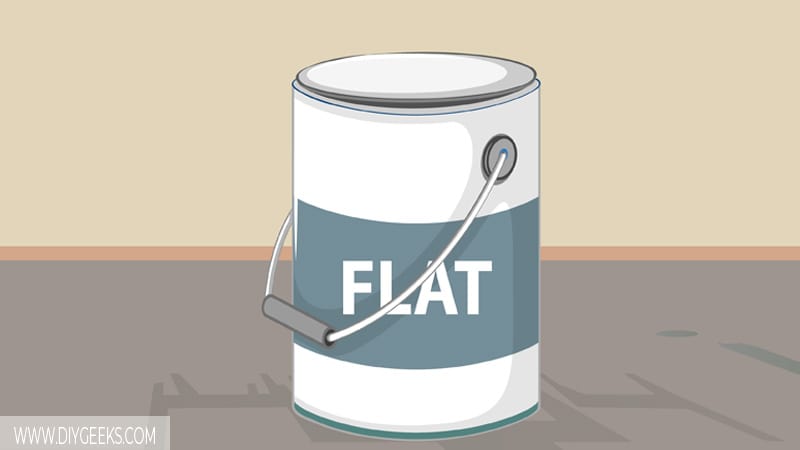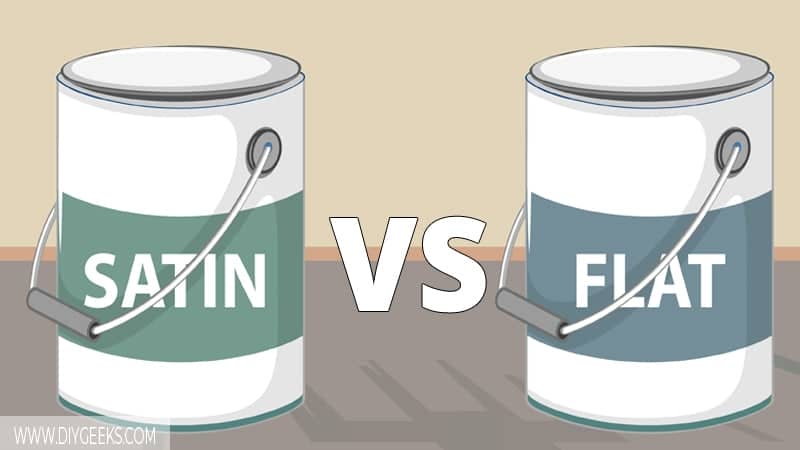Satin paint is a finish type that creates a mid-gloss and textured finish that reflects light but covers small surface imperfections. Flat paint is a finish that creates a dull and textured finish that doesn’t reflect light but covers surface imperfections.
Satin paint has more sheen (or luster), is easier to clean and maintain, is more durable, offers better moisture resistance and wood protection, and requires fewer coats than flat paint.
Flat paint has less sheen (or luster), thinner viscosity, and dries faster than satin paint.
What is Satin Paint?

Satin paint is a finish that has more sheen (or luster) than matte or eggshell paint, but less sheen than semi-gloss and high-gloss paint. It creates a mid-gloss finish that slightly reflects light.
It’s the middle ground between a matte finish and a high-gloss finish. Satin paint is used over interior surfaces that are exposed to small water amounts.
What is Flat Paint?

Flat (or matte) paint is a finish type characterized by its low sheen (luster) amount. It creates a non-reflective finish that is dull and textured and hides surface imperfections.
Matte paint has a simple formula that contains solvent (water), pigments, and a binding agent. It doesn’t contain sheen (or luster) or protective additives.
Its finish is water-soluble and doesn’t offer surface protection.
You can use flat paint for the following things.
- For painting decorative items and ornaments.
- To tint or add color to clear sealers, such as polyurethane.
- In arts and crafts and design work.
- To hide imperfections and spots.
- To create a glazed finish.
- As a base coat.
Satin vs Flat Paint
The differences between satin and flat paint are listed below.
Sheen Amount
Satin has more sheen amount on its formula than flat paint. The difference in sheen amount makes both paints have different finish types and durability.
Cleaning and Maintenance
Satin is easier to clean and maintain than flat paint because it has a mid-glossy and textured finish that repels dust and stains and hides surface imperfections.
Flat paint is harder to clean and maintain as its dry textured finish can’t withstand constant cleaning and will get removed if exposed to water.
Dry Time
Flat paint dries faster than satin paint as it has less sheen (gloss) on its formula, thinner viscosity, and is usually water-based. Satin paint has a fast dry time too.
Flat paint takes between 30 minutes to 1 hour to dry between coats, while satin paint takes between 1-2 hours.
Durability
Satin paint is more durable than flat paint as it forms a mid-gloss finish that repels water and moisture and prevents scratches.
Flat paint isn’t durable as it forms a dry textured finish that isn’t water or scratch-resistant.
Moisture Resistance
Satin paint offers better moisture resistance to surfaces than flat paint as it forms a mid-gloss finish that repels low water amounts.
Flat paint is water-soluble and will get removed if exposed to constant water or moisture.
Paint Application
Satin pain is harder to apply than flat paint as it has a thicker viscosity that can drip over the surface and has a longer dry time.
Flat paint is easier to apply as it doesn’t require thinning and has a fast dry time, allowing you to apply multiple coats faster without sanding.
Coats Number
Satin paint requires fewer coats for proper coverage as it has a thicker viscosity. Flat (or matte) paint requires more coats as it has a thinner viscosity that doesn’t cover surfaces properly.
Wood Protection
Satin paint offers better wood protection than flat paint as it forms a mid-gloss finish that repels low water amounts. Matte paint doesn’t protect wooden surfaces as it’s water-soluble and doesn’t prevent water penetration.
The Finish
Satin paint creates a mid-gloss finish that is slightly reflective but textured at the same time. It’s the middle ground between a glossy and dry textured finish.
Matte paint creates a dry textured finish that doesn’t reflect light but covers surface imperfections better.


